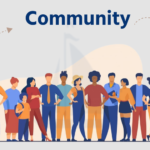In the current world, digital abilities are not only a convenience but a need for everyday responsibilities. those abilities encompass a large range of abilities that empower people up-to-date navigate and thrive in the contemporary increasingly more virtual panorama. Moreover, updated literacy, from basic tasks to advanced skills like data analysis and cybersecurity, is essential for personal and professional success. With technology advancing rapidly, digital skills are crucial for communication, data management, and project success. Consequently, this sets the stage for exploring ways to enhance everyday life.
Also mentioned here: Digital Skills for Daily Tasks
Basic Computer Skills
Additionally, basic computer skills enable individuals to effectively use computers for various tasks, from browsing the web, sending emails, creating documents, and using spreadsheets. Simple PC abilities consist of familiarity with running systems (including Windows or macOS), information file management (organizing, moving, and deleting documents), and using unusual software packages like word processors and internet browsers. moreover, simple PC competencies often contain knowing the way to troubleshoot unusual laptop problems and carry out primary renovation obligations, inclusive of updating software and coping with storage. those capabilities are foundational and provide a solid base for constructing superior laptop literacy.
1. Operating Systems: Understanding the way up updated navigate and use simple features of operating structures such as home windows or macOS.
2. File Management: Capability up-to-date, move, reproduce, and delete files and folders.
3. Word Processing: Talent in the usage of phrase processing software programs (e.g., Microsoft Word, Google Up-to-date) to create and edit files.
4. Spreadsheets: Fundamental information of spreadsheet software (e.g., Microsoft Excel, Google Sheets) for duties like information entry and easy calculations.
5. Internet Browsing: Familiarity with net browsers (e.g., Chrome, Firefox) up-to-date browse the net, looking for records, and using bookmarks.
6. Electronic Mail: In addition, capacity up-to-date ship, you can get hold of and manipulate emails using e-mail up-to-date or internet-up-to-date e-mail services.
7. Basic Troubleshooting: Moreover, expertise is required to identify and remedy commonplace up-to-date issues. These may include restarting a PC or checking for updates.
8. Security Awareness: Understanding of primary safety practices, up-to-date using strong passwords, and recognizing phishing tries.
9. Software Program Updates: Potential date, however, updated for and set up software updates, to keep systems up to date and secure.
10. Storage Management: Moreover, expertise in the up-to-date management of the garage area includes date deleting useless files and the use of external storage devices.
Internet Skills
First of all, Internet skills align with the abilities and information required to effectively navigate and utilize the net for diverse functions. Furthermore, those capabilities are crucial for tasks inclusive of engaging in research, communicating with others, accessing information, and participating in online sports. In addition, here are a few key internet skills.
1. Web Navigation: The ability to navigate websites with the use of hyperlinks, menus, and search engines like Google and Yahoo to locate
2. Relevant Statistics: Seek Engine Use skill ability in using search engines like Google (e.g., Google, Bing) to discover particular records and compare search outcomes for relevance and credibility.
3. Website Evaluation: Expertise helps evaluate website credibility, find trustworthy sources, and spot misinformation.
4. Online Conversation: Know-how of how to speak efficaciously through various online structures, together with electronic mail, social media, and messaging apps.
5. Online Safety: Additionally, online protection practices involve safeguarding personal data, detecting phishing attempts, and using secure connections.
6. Digital Citizenship: Understanding of moral and responsible conduct online, together with recognizing others’ privateness and intellectual assets rights.
7. Social Media Use: Moreover, the capacity to apply social media structures for networking, sharing records, and engaging with others professionally and individually is essential in today’s digital age.
8. Online Studies: Additionally, skilled in online research using databases, journals, and other sources to find relevant information.
9. Information Privacy: Information on how to defend non-public statistics online, including information privacy settings and handling cookies and monitoring.
10. Online Collaboration: Additionally, the ability to collaborate with others online through the usage of tools consisting of cloud storage, file sharing, and digital assembly platforms is essential for modern-day teamwork.
Digital Communication
Furthermore, virtual verbal exchange plays a vital role in maintaining connections in today’s digital age. Additionally, understanding the nuances of non-verbal communication is crucial in virtual interactions. Moreover, adapting communication styles to suit different platforms is essential for effective virtual verbal exchange.
1. Electronic Mail: Moreover, sending and receiving emails for expert and private conversations involves writing clear and concise messages, managing threads, and adhering to e-mail etiquette.
2. Messaging Apps: Use messaging apps such as WhatsApp, Slack, or Microsoft Businesses for quick and casual communique, one-on-one and in agencies.
3. Social Media: Moreover, engage with others on social media systems through sharing, commenting, and networking.
4. Video Conferencing: Sporting out digital meetings involves utilizing structures like Zoom, Microsoft Groups, or Google Meet. Additionally, this includes putting in local conferences, sharing monitors, and interacting with individuals.
5. Webinars and Online Displays: Turning in presentations and webinars online, which include preparing slides, enticing the target audience, and managing questions.
6. Netiquette: knowledge and working towards proper etiquette in online conversation, together with the usage of suitable language, respecting others’ reviews, and fending off misunderstandings.
7. Emoticons and Emoji: using emoticons and emojis to convey tone and feelings within the written communique, especially in casual settings.
8. Digital Accessibility: Providing accessible virtual communication for all, including those with disabilities, through adherence to guidelines and various formats.
9. Privateness and Safety: Being aware of privacy and safety troubles in digital conversation, along with protecting information and the use of secure communication channels.
10. Multimedia Communication: Using multimedia elements which include pix, movies, and audio recordings to decorate digital conversation and convey messages more efficiently.
Data Management
Records control involves collecting, storing, organizing, and maintaining records to ensure accuracy, reliability, and accessibility. Additionally, effective management helps organizations make informed decisions and improve performance. Moreover, key elements of data management include.
1. Records Series: Collecting data from numerous resources, along with internal structures, outside databases, and 0.33-birthday party resources.
2. Data Garage: Storing information in a comfortable and organized way, using databases, facts warehouses, or cloud garage offerings.
3. Data Agency: Organizing data efficiently with relational databases and modeling for easy retrieval and analysis. (12 words)
4. Records Cleansing: Identifying errors, removing duplicates, and updating information to ensure accuracy and consistency.
5. Information Integration: Combining facts from more than one resource creates a unified view of the statistics, enabling higher analysis and decision-making.
6. Information Protection: Implementing measures to date to shield records from unauthorized admission updates, information breaches, and other protection threats.
7. Records Nice Control: Making sure that records are correct, whole, and through procedures like facts validation and facts profiling.
8. Master Information Control: When dealing with key information entities (including clients, products, or employees), it is crucial to ensure consistency and quality throughout the organization.
9. Information Governance: Furthermore, establishing policies and tactics for handling records successfully, inclusive of information possession, privateness, and compliance with policies, is essential for maintaining organized and secure record-keeping systems.
10. Data Retention and Archiving: Figuring out how long data must be retained and making sure that it’s far archived securely for Destiny reference.
Effective records control practices are vital for businesses to derive fees from their information assets and benefit from an aggressive advantage in cutting-edge facts-driven international.
Cybersecurity Awareness
First of all, cybersecurity recognition involves understanding modern cyber threats and the actions individuals and organizations can take to protect themselves. In addition, key aspects include threat awareness and knowledge to mitigate risks.
1. Phishing Attention: Recognizing phishing emails and messages that try to trick up-to-date in updating revealing touchy records or clicking on malicious links.
2. Password Security: Using sturdy, precise passwords for different accounts and enabling two-issue updated authentication (2FA) if possible.
3. Software Updates: Preserving software, working structures, and programs updated shield up-to-date vulnerabilities that may be exploited by way of cyber attackers.
4. Safe Net Browsing: Averting doubtlessly malicious websites and the use of relaxed connections (HTTPS) whilst browsing the net.
5. Statistics Safety: Protective sensitive information using encrypting it and proscribing to get entry to authorized customers handiest.
6. Cellular Protection: Securing cellular gadgets with passwords or biometric authentication and putting in security updates frequently.
7. Social Engineering Awareness: Being careful of social engineering assaults that manage individuals into divulging personal data.
8. Information Backup: Often backing up vital facts to defend against data loss because of cyber assaults or hardware failures.
9. Network Protection: The usage of firewalls, antivirus software, and intrusion detection systems to protect networks from unauthorized get entry.
10. Incident Reaction: knowing the way to reply to a cyber assault or records breach, consisting of reporting incidents to the perfect authorities and mitigating similar harm.
Cybersecurity consciousness is vital for individuals and agencies to shield themselves from cyber threats and guard their virtual assets and records.
Cloud Computing
Firstly, cloud computing involves delivering computing services over the internet to enable fast innovation, flexibility, and cost savings. Secondly, here are the key elements of cloud computing.
1. On-demand Access: Customers can get entry to computing sources on-demand from anywhere with a web connection, paying the simplest for what they use.
2. Scalability: Cloud services can scale up or down based on demand, permitting groups to speedy regulate assets to satisfy changing desires.
3. Price-Powerful: Cloud computing gets rid of the need for advanced infrastructure investments. Additionally, it reduces IT costs, as customers pay only for the resources they devour.
4. Flexibility and Mobility: Cloud built-ing integrated allows users to get the right of entry to programs and statistics from any device, anywhere, presenting built-in integrated greater flexibility and mobility.
5. Reliability: Cloud providers commonly provide an excessive stage of reliability, with redundancy and failover mechanisms to built-in integrated operation.
6. Safety: Cloud carriers offer a variety of services to their customers. In addition, they provide built-in force sturdy safety features to defend built-in integration, built-in encryption, get right of entry to controls, and compliance certifications.
7. Collaboration: Cloud services facilitate collaboration amongst customers, allowing them to proportion and co-edit files in actual time, regardless of place.
8. Backup and Recovery: Cloud providers offer automated backup and restoration offerings, ensuring statistics are protected and may be restored in case of loss.
9. Elasticity: Additionally, cloud offerings can routinely regulate assets to fit workload demands, thereby ensuring the finest performance and value efficiency.
10. Environmentally Friendly: Cloud computing may be extra environmentally pleasant than conventional on-premises infrastructure, as it reduces the need for bodily hardware and energy intake.
Additionally, typical cloud computing gives several advantages to people and businesses, enabling them to innovate, collaborate, and perform more efficiently in the latest virtual world.
Digital Collaboration
Digital collaboration refers to the usage of digital gear and technology to facilitate teamwork, communique, and cooperation among individuals or businesses, irrespective of their place. Additionally, it enables people to paint collectively on tasks, and percentage thoughts, and gain common goals correctly. In conclusion, here are the key factors of digital collaboration.
1. Communication structures: Additionally, utilizing diverse conversation gear consisting of e-mail, immediate messaging, and video conferencing helps to facilitate actual-time communication and interaction amongst team members.
2. Mission Control Software Program: Moreover, the use of undertaking control tools like Asana, Trello, or Jira to devise, organize, and song obligations, cut-off dates, and project progress collaboratively.
3. File Collaboration: Leveraging cloud-based document collaboration platforms together with Google Doctors, Microsoft Office 365, or Dropbox Paper to create, edit, and share documents concurrently with team participants.
4. Virtual Conferences: Accomplishing digital conferences and meetings using video conferencing gear like Zoom, Microsoft Teams, or Webex, enabling participants to collaborate and speak efficaciously regardless of their geographical vicinity.
5. Document Sharing: Sharing files, files, and other sources securely through cloud garage offerings along with Google Force, OneDrive, or Dropbox, making sure easy entry to and collaboration among crew individuals.
6. Display Screen Sharing and far-flung manipulation: Moreover, the usage of display screen sharing and far-off control equipment helps provide remote help, troubleshoot issues, and collaborate on obligations that require shared admission to computer screens or applications.
7. Collaborative Modifying: Collaboratively editing and reviewing files, spreadsheets, and presentations in real-time for the usage of functions to be had in document collaboration systems or specialized editing tools.
8. Dialogue Forums and Wikis: In addition, organizing online discussion forums, wikis, or understanding bases to facilitate ongoing communication, knowledge sharing, and collaboration amongst team contributors.
9. Version Manipulation: Imposing version control systems to manipulate modifications to files, code, or different collaborative assets, ensuring consistency and stopping conflicts in collaborative work.
10. Move-Practical Collaboration: Facilitating collaboration and information sharing among various departments, groups, or corporations to promote innovation, alignment, and synergy in achieving common goals.
Furthermore, universal digital collaboration complements productivity, creativity, and teamwork by providing tools and structures that enable seamless communication, coordination, and cooperation among people and organizations in today’s interconnected world.
You may also like to read: Email Marketing Software

Problem-Solving Skills
Trouble-solving competencies communicate over with the capacity to turn out to be aware of, examine, and remedy issues efficiently and effectively. Those competencies are treasured in numerous contexts, which encompass work, college, and regular existence. Proper here are key elements of trouble-solving capabilities.
1. Problem Identification: Spotting that a problem exists and defining it without a doubt and concisely.
2. Problem Evaluation: Breaking down trouble into smaller, more achievable components can help us understand its underlying motives and effects.
3. Answer Technology: Brainstorming and producing potential answers or procedures to remedy the hassle.
4. Selection Making: When comparing the potential answers and deciding on the maximum appropriate one, it is important to consider criteria such as feasibility, effectiveness, and impact.
5. Implementation: By setting the chosen solution into motion, we can then track its progress to ensure it effectively addresses the trouble.
6. Evaluation: Assessing the final results of the solution to determine its success and perceive any regions for development.
7. Creativity: Wondering creatively, to give you innovative solutions to complicated or novel problems.
8. Essential wondering: The usage of good judgment and reasoning to investigate issues and compare the strengths and weaknesses of different answers is essential. Consequently, this process helps in making informed decisions and conclusions.
9. Collaboration: Running collaboratively with others to remedy issues, leveraging numerous views and talents.
10. Persistence: Demonstrating perseverance and resilience when faced with disturbing situations, and now not giving up effortlessly.
Furthermore, developing valuable hassle-fixing skills is crucial for personal, academic, and professional success. This requires practice, experience, and learning from both successes and failures.
Adaptability
First and foremost, adaptability refers to the capability to adapt to new conditions, environments, or situations. Additionally, it entails being flexible, open-minded, and able to respond efficiently to change. Consequently, here are the key factors of adaptability.
1. Flexibility: Being open to new thoughts, techniques, and methods of doing things, and inclined to change path when necessary.
2. Resilience: Bouncing returned from setbacks, demanding situations, or failures, and retaining a fine mindset in the face of adversity.
3. Trouble-Solving: The usage of innovative wondering and hassle-fixing capabilities to evolve to new or sudden situations.
4. Emotional Intelligence: Knowledge and handling your personal feelings and being empathetic and understanding toward others, specifically in times of trade or uncertainty.
5. Getting to know Agility: Being able to quickly research and observe new data or competencies in distinctive conditions.
6. Danger-taking: Being inclined to take calculated risks and attempt new things, even if they involve uncertainty or capacity failure.
7. Open-Mindedness: Being receptive to new ideas, perspectives, and methods of wondering, and keeping off pressure or near-mindedness.
8. Adventurousness: Curious and adventurous, in addition to being willing to try new experiences beyond your comfort zone.
9. Selection-Making: Being capable of making choices quickly and efficaciously in converting or unsure conditions.
10. Self-reflection: Take time to mirror your reviews, study from them, and follow those instructions in future situations.
Adaptability is a precious talent in both personal and professional settings, as it allows people to thrive in dynamic and evolving environments. It permits human beings to embrace alternatives, navigate challenges, and seize opportunities for increase and improvement.

Agreement
In the end, digital competencies are critical for everyday duties in the contemporary world. From fundamental laptop literacy to advanced capabilities like facts control and cybersecurity, these abilities enable individuals to navigate technology efficaciously. With the proper abilities, people can speak successfully, get the right of entry to statistics easily, and remedy problems effectively. As technology continues to adapt, it’s essential to maintain studying and adapting to new digital gear and technology. Growing and honing digital capabilities no longer simply improves private productivity but also opens up new possibilities for professional growth and fulfillment in the modern-day digital age.








